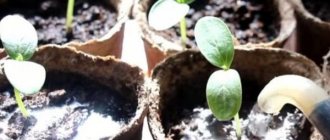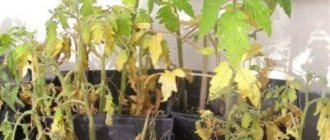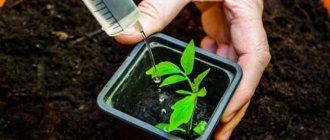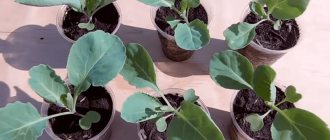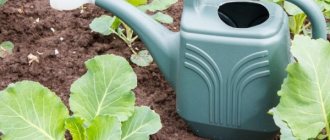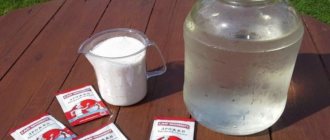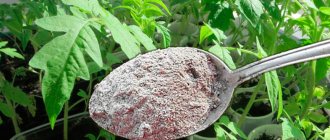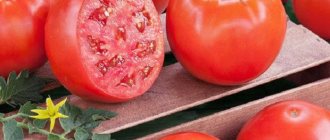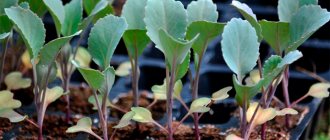The most favorite vegetables in every area remain tomatoes and peppers, at least this is the situation in Russia. Because these vegetables not only taste great, but they also contain a lot of useful substances. In order to become the owner of the best harvest of these crops, you should not only plant seedlings in open ground on time, but also fertilize and feed the plants with various substances. Proper feeding of seedlings has a direct impact on the quantity and quality of the harvest.
Peppers and tomatoes belong to the same family, so they have a similar growing method. It is necessary to sow seeds for seedlings in advance so that the plants have time to grow during the short summer, which is typical for central Russia.
Feeding tomato and pepper seedlings with folk remedies
Today, in gardening stores you can purchase many different preparations for feeding seedlings. But, for lovers of everything natural, the best option for such fertilizers will be those that are made with your own hands.
The main substances needed by peppers and tomatoes are potassium, nitrogen and phosphorus. The best source of nitrogen for these vegetable crops is bird droppings. It must be diluted with water in a ratio of one to two and left for 2-3 days. The resulting concentrate must be mixed and added to water for irrigation (1:10). Bird droppings can accelerate the growth of tops. But, it can only be used once before moving the nightshades into open ground.
Coffee lovers often end up with large amounts of used grounds. It can be used not only as a substrate for growing mushrooms, but also as a source of nutrition for seedlings. In addition to its main effect, coffee grounds loosen the soil well and improve oxygen access to plant roots. To improve the structure of the soil, simply add a little coffee grounds to it.
Coffee waste to improve the substrate
Another type of “folk” nutrition is onion peel. It (20 g) is filled with water (5 liters) and left for 3-4 days. After which the water can be used to water the seedlings. It will not only fill the soil with useful substances, but will also be able to disinfect it.
You can also use water in which potatoes were boiled, beet sugar and dry yeast.
The best fertilizers
Various means are used to feed plants. Such products are found in every home; they feed plants well with useful microelements, but require preliminary processing.
Eggshell
Helps approximately double the yield of vegetables. The main component of the shell is calcium carbonate. It is easily absorbed by plants. It also contains magnesium, phosphates, various organic substances and potassium salts.
The shells must be thoroughly dried and placed in a cardboard box. Air will penetrate through the porous material, which will speed up the drying process. Then it is crushed using a coffee grinder or any other convenient method. The finished raw material must be poured with boiling water and left for 4-6 days.
Pepper and tomato seedlings are very susceptible to such feeding. If you can't handle raw shells, you can use water from boiled eggs, but it will contain less minerals.
Yeast
A very effective and healthy way to support the plant. This product is almost always in the kitchen, so you don’t have to spend extra money. Interestingly, yeast has a positive effect on young plants, but is not considered a supplement. They are natural growth stimulants.
Yeast cells dissolve well in water and activate the process of root formation. In addition, in the future, the seedlings will better tolerate diving, and the soil will remain moist longer. Under the influence of yeast, the activity of some soil microorganisms increases, organic matter is mineralized faster, releasing phosphorus and nitrogen. Yeast is effective when seedlings are not growing well.
It is not recommended to use yeast too often. They give an amazing effect, but after a while the soil will become hard and poor in organic components.
There are several ways to prepare a growth stimulator from yeast:
- Fresh yeast must be dissolved in water (200 g/l warm water). After this, the liquid is infused for about 3 hours. The solution will be quite concentrated. Before adding it to the soil, it is diluted in a ratio of 1 to 10.
- Dry yeast is pre-mixed with granulated sugar (2 sachets + 1/3 tbsp), then poured into a bucket of water and stirred continuously until the granules and crystals are completely dissolved. This mixture will be ready in an hour. All you have to do is dilute it in a ratio of 1:5 - and you can use it.
Note! Sometimes fertilizing with beer is used. To do this, the drink is diluted in a ratio of 1:4.
Banana peel
It contains a lot of potassium, but much less nitrogen and phosphorus. This feeding is also used to compensate for the lack of magnesium and calcium. Magnesium is involved in the process of photosynthesis and is simply irreplaceable for greenhouse plants. How to feed with banana peel?
You can prepare fertilizer like this:
- Rinse the peel thoroughly with water and cut into small pieces. They are buried in containers with seedlings or in the soil in the garden bed. This type of fertilizing is not recommended to be combined with other fertilizers.
- An even more effective remedy is fried banana peel. To do this, you need to cover a baking sheet with foil, place the skins on it and bake them in the oven. When they cool down, chop them. Only a spoonful of this fertilizer is needed for one bush. It can be used either dry or soaked in water.
- Greenhouse plants are responsive to banana tincture. Several skins are placed in a three-liter container, filled with warm water and infused for several days. Afterwards, the liquid is filtered and diluted with water in equal parts.
Milk
Bell peppers are in great need of calcium, and they are also beneficial for tomatoes. Therefore, feeding from homemade milk (whey) will come in handy. 5 liters of water are mixed with a liter of raw milk and 15 drops of alcohol tincture of iodine are added. Store-bought milk is not suitable, since after pasteurization it loses almost all its beneficial substances.
Onion peel
It is rich in carotene. This is a good option for foliar feeding. The husk strengthens the immunity of seedlings, making them resistant to pests and diseases. Phytoncides destroy fungi and bacteria, and vitamin B activates the growth of bushes, making the stems denser. Onions are also an effective remedy for controlling Colorado potato beetles, aphids and mites.
To prepare the infusion, you need to take 50 g of husk and pour 10 liters of hot water into it. After 5 days the fertilizer will be ready.
Coffee grounds
It must be thoroughly mixed with the soil to prevent mold from appearing. This fertilizing makes the soil looser and more oxygen reaches the roots.
Potassium permangantsovka
Peppers and tomatoes require manganese. With enough of it, the fruits will be larger and tastier. This element is also an excellent preventive measure against many diseases, such as brown spot.
The solution should be slightly pink. Strong concentrations are contraindicated for plants. You need to take settled water (10 l) and pour 2 g of crystals into it. This product can be used no more than 2 times a week.
Hydrogen peroxide
Helps protect tomatoes from late blight. It also has a beneficial effect on roots, preventing the development of rot, saturates the soil with oxygen and suppresses the development of pathogenic microflora.
You need to take a 3% peroxide solution (4 tbsp) and dilute it with 3 liters of water. No more than 500 ml of solution is poured under one bush.
Iodine
Not only people suffer from its deficiency, but also peppers and tomatoes. The sprouts that have emerged begin to hurt, become lethargic and slow down in development. There are only a couple of drops of iodine per 1 liter of water. It is useful to spray plants with this composition. To disinfect them, iodine (5 drops) is mixed with water (1 liter) and a glass of milk. This liquid is used for irrigation.
Note! Many people feed young plants with ammonia (aqueous solution). But there are different opinions regarding the use of such a tool. Not everyone welcomes fertilizing with ammonia.
Banana peel nutrition for tomato and pepper seedlings
If you have a large amount of banana skins left, they can be used to eliminate potassium deficiency in plants. The lack of this element negatively affects the absorption of nitrogen. Which leads to sluggish and weak seedlings.
Preparing banana food is very simple. It is necessary to place the skins of 3-4 bananas in a three-liter jar, fill them with water and leave for 3 days. After this time, potassium will be released from the skins and fill the water. Which then needs to be watered the plants.
Use of natural stimulants
Despite the abundance of growth stimulants available commercially, a gardener may find it more beneficial to use home remedies to achieve desired results. First of all, this group should also include aloe juice, dried mushrooms, honey and potato juice. In order for bait to have a significant effect, it is necessary to follow the recipe for its preparation.
If you plan to use aloe, you will need to cut the leaf, wrap it in gauze or cloth, and then keep it in the freezer for two days. Then you should squeeze out the juice without using metal objects and dilute it 1 to 1 with water.
Dried mushrooms can become an excellent stimulant if you pour boiling water over them, cool and leave the seeds in the resulting solution for 6 hours. Honey is used similarly, which is dissolved in warm water. Potato juice will require preliminary freezing of the tubers for 3 days, after which the seeds are soaked in the squeezed juice.
Fertilizers for tomato and pepper seedlings
Adding nutrients to the soil is an important step on the path to a large harvest of vegetables. But, if the substrate in which the seedlings of these nightshade crops are grown is rich in nutritional compounds, then it is better to refuse such feeding. After all, their excess affects plants worse than their deficiency.
For example, excess nitrogen accelerates plant growth, but does not increase its yield. Therefore, these plants need to be fed only when their appearance tells us so.
A bountiful harvest
It is best to use a solution of rotted manure or special mineral fertilizers at this time.
- Superphosphate (3 g), potassium (1 g) and ammonium nitrate (0.5 g) are diluted in settled water (1 liter)
For tomatoes it is best to use this solution:
- Urea (0.5 g), superphosphate (4 g) and potassium salt (1.5 g) are diluted in one liter of water
You can also use the compositions that are described in the first section of this article.
Advice from experienced vegetable growers
A few simple tips from practitioners that will help you reap a rich harvest:
- Peppers don't like fresh cow manure, so don't overdo it when preparing your beds.
- After preparing the eggshell solution, place it to infuse next to the seedlings. This will also have a beneficial effect on the ripening of the bushes.
- If pepper leaves curl, this indicates a lack of potassium in the soil.
- It is better to slightly underfeed the bushes than to overfeed them. Excess fertilizers can only do harm.
Feeding tomato and pepper seedlings after picking
To grow high-quality planting material, feeding seedlings after picking is of great importance. After this process, you need to add the necessary nutrients to the soil.
Baker's yeast performed very well at this stage of development of seedlings of these vegetable crops. They are rich in both nitrogen and phosphorus. But yeast as a fertilizer has one significant disadvantage. During their vital activity, these fungal microorganisms decompose potassium. To prevent this from happening, this mineral must be added to the yeast solution.
Pepper seedlings
Fertilizers should be applied to seedlings before watering. It is best to do this in the morning. After fertilizing, the seedlings must be watered with water at room temperature.
Feeding tomato and pepper seedlings after planting in the ground
Peppers and tomatoes need subcortex at all stages of plant development. But, if, when preparing a substrate for seedlings, it is easy to form soil rich in nutrients, then doing the same with beds is somewhat more difficult. Therefore, the most optimal solution would be to apply fertilizer immediately after replanting the plants.
But the main thing here is not to overdo it. For this purpose, you should always look closely at the plants. If the summer is dry, then fertilizing with potassium will not only not give the expected result, but, on the contrary, can cause plant disease.
But, if it rains quite often, then the seedlings may not have enough potassium in the soil and then this compound needs to be added as a top dressing. But this can only be done 15 days after transplanting the seedlings to a new location. This time is given so that the plants have time to adapt to new conditions.
After acclimatization of seedlings, they may require phosphorus and potassium supplements. But it is better to refuse nitrogen-containing fertilizers.
SECRET: When the peppers and tomatoes bloom, dilute a small amount of sugar in water and sprinkle it on the beds with these plants. Sugar will attract bees, wasps and butterflies. These insects will pollinate the plants and help increase fruiting.
Lack of microelements
If plants are fed irregularly, this will affect their development. Let's see how nutritional deficiencies are expressed:
- Nitrogen. The plant has a light green or yellowish tint; in general, peppers or tomatoes have an unhealthy appearance. Seedlings may turn pale before the leaves turn white. On the underside of the leaf, the veins have a reddish-bluish tint.
- Phosphorus. First, the leaves darken, then acquire a dark purple hue. The growth and flowering of the plant slows down, and the ripening of fruits is delayed.
- Potassium. The edges of the leaves of tomatoes and peppers turn brown and yellow. Leaves and fruits are deformed, taking on an irregular appearance. With a lack of potassium, the plant becomes vulnerable to diseases such as brown spot.
- Magnesium. The leaves seem to discolor and become pale yellow. But not everywhere, but only between the veins. Leaves and fruits are deformed.
- Calcium. The leaves are “scorched” only at the tips. This is the first signal - a brown or yellow edge of the leaf. A lack of calcium leads to blossom end rot on tomatoes (less often on peppers), which is almost impossible to stop.
Special attention is paid to feeding. A lack or excess of nutrients can not only slow down the development of the entire plant, but also significantly reduce yield. In the table below you will find signs of a lack of elements, as well as options for feeding tomato seedlings at home.
Feeding tomato and pepper seedlings with yeast
Fertilizing seedlings with yeast not only helps add nutrients to the soil, but also completely rebuilds the structure of the soil. This work of fungal microorganisms accelerates the growth of seedlings and improves the yield of peppers and tomatoes.
The basis of this feeding is yeast (10 g), sugar (4 tablespoons) and water (10 liters). The resulting solution is a concentrate, which must be diluted with clean water in a ratio of 1:10 before applying it to the soil.
Rich harvest of peppers
You can replace yeast with wheat grains. To do this, fill them with a small amount of water and leave them in a warm place. When the grains swell, grind them into porridge and add sugar. Two to three tablespoons per glass of dry wheat grains. The resulting viscous mass must be heated and left for a day in a dark place.
Before using this fertilizer, this mass must also be diluted with clean water.
How to determine nutritional deficiencies
Their appearance will tell you what minerals the growing seedlings lack.
A lack of nitrogen can be recognized by faded light green leaves that are smaller than expected, thin and fragile stems, and slow growth.
If plants lack phosphorus, their leaves turn dark emerald or purple. They grow more slowly, begin to darken, dry out and fall off.
With a lack of potassium, the foliage turns yellow or brown, curls down and becomes wrinkled at the edges.
With a lack of magnesium, the leaf blades become light, but the veins retain their natural color.
When there is little calcium in the soil, the buds at the top and roots are damaged and begin to die, the foliage curls, and their edges dry out.
If there is a lack of manganese, spots or through holes appear on the leaf blades.
If pepper and tomato seedlings lack iron, then obvious signs of chlorosis appear on the foliage - the leaf blades become lighter or even turn yellow, but do not fall off.
With a lack of boron, not only the vegetative mass dies, but also the roots, buds do not appear and flowers do not bloom.
When the soil is low in copper, the foliage becomes lighter and the tips become white.
With a lack of zinc, the foliage becomes chlorotic in color with a bronze tint.
When seedlings lack molybdenum, small spots appear on the leaf blades and the foliage curls.
How to feed tomato and pepper seedlings with ash at home?
Ash is not only an excellent source of potassium, calcium, magnesium and other minerals useful for plants, but also a unique substance that can turn acidic soil into one that will be suitable for vegetable crops. Ash in the soil reduces the risk of developing fungal diseases in tomatoes and peppers.
To prepare fertilizer from ash, you need to mix one tablespoon of this substance with two liters of water and leave for 24 hours. At the same time, you need to make sure that the ash you use as fertilizer was not obtained by burning construction waste and painted wood.
What should you not fertilize seedlings with?
To get a good harvest, you must know what not to fertilize tomatoes and peppers with. The following should not be chosen as feeding:
- Fresh manure . Manure is considered one of the highest quality natural fertilizers for the garden, but it is not suitable for tomatoes and peppers. Fresh manure (especially chicken manure) contains large amounts of ammonia. It adversely affects the root system; there is a high risk of root burns and plant death. It is permissible to use only composted or rotted manure.
- Salt . Regular table salt is considered a useful fertilizer, but such fertilizing promotes the germination of small roots and a decrease in yield.
- Nitrogen fertilizers are a seemingly necessary aid when growing seedlings. However, a minimal excess of nitrogen in fertilizing will lead to damage to the plant, as well as to a decrease in immunity and the development of diseases. If too much nitrogen is added, tomatoes and peppers become saturated with nitrates, which are dangerous to human health.
You can get a luxurious harvest of tomatoes and peppers only from healthy seedlings. If you properly fertilize young tomatoes and peppers, following the recommendations on timing, methods and types of fertilizing, you can subsequently enjoy tasty and healthy vegetables.
How to dilute urea to feed tomato and pepper seedlings?
Urea is a concentrated nitrogen-containing fertilizer. At the same time, the nitrogen in this substance is in a state convenient for assimilation by plants. This fertilizer is in granular form. It can be applied either directly to the soil or as a solution.
Urea
For root feeding with this fertilizer, 60 g of urea is diluted in water (10 liters) and the plants are watered with this solution. For foliar feeding, increased proportions are used (100 g of urea per 10 liters of water).
In dry form, urea is applied to the ground at the rate of 12 g per 1 m2 before planting seedlings and 10 g per 1 m2 in the active growth phase. You need to feed the seedlings with a liquid urea solution before flowering.
Soil preparation
Using purchased soil, you can expect that the seeds will take root and germinate at the appointed time. If it is not possible to buy a suitable composition, then preparing the mixture with your own hands is not difficult.
Tomatoes and peppers love loose soil with plenty of organic matter. Do not over-moisten the soil to prevent fungus from appearing and the roots to rot. Air humidity should be moderate - it is better not to keep seedlings near heating devices.
Recommended soil composition for producing seedlings:
- garden soil – 10 l;
- clean sand , previously disinfected in the oven - 5 l;
- peat (can be bought at a garden store) – 5 l ;
- ready compost – 5 l.
Additional substances:
- stove ash – 150 g;
- three-component complex fertilizer – 30 – 40 g.
Mix all ingredients well, break the lumps with your hands or sift through a sieve so that the granules are no larger than 2 mm in diameter. Place in a distribution box or cups. In this case, cups are better, because when transplanting into open ground, the root system will be less damaged.
Top dressing Krepysh for seedlings of tomatoes and peppers
"Krepysh" is a water-soluble fertilizer from. It is available in both dry and liquid form. This fertilizer contains all the natural stimulants necessary for vegetable crops, humates, and such important elements for plants as:
- Magnesium
- Potassium
- Iron
- Nitrogen
The composition of this supplement is carefully balanced. This fertilizer is easy to work with. It is introduced into the soil with seedlings during watering. The first feeding should be done after the formation of the second leaf. Then during picking and every two weeks until flower ovaries form.
For seedlings of peppers and tomatoes, you need to dilute two teaspoons of “Krepysh” per 10 liters of water.
Common mistakes
Among the common mistakes when fertilizing seedlings of peppers and tomatoes for thickness and growth, the following should be noted:
- adding nutrients when plants have only formed cotyledon leaves;
- Too much fertilizer containing nitrogen is added to the soil - in this case, the seedlings will grow too actively green mass to the detriment of the formation of buds;
- vegetable growers do not pay attention to the appearance of plants, which itself will tell you what minerals it lacks, so the necessary macro or microelements are not added to the soil;
- seedlings are fed too rarely or too often during cultivation, so they will suffer from a lack or excess of nutrients.
Top dressing for seedlings of tomatoes and peppers Ideal
Top dressing "Ideal" is created on the basis of vermicompost (a product of the activity of earthworms). It can be used as a fertilizer for peppers, tomatoes and other fruit and berry crops. This fertilizer can also be used to root cuttings and accelerate seed germination.
With "Ideal" you can:
- Accelerate the adaptation of seedlings in a new place
- Improve the root and vegetative system of plants
- Accelerate fruit ripening
- Increase productivity
- Increase the amount of nutrients in vegetables and fruits
- Reduce the risk of disease development in plants
Ideal fertilizer is a Russian product. Domestic specialists, who took vermicompost as the basis for this fertilizer, improved its structure by artificially introducing macro- and microelements that are necessary for cultivated plants.
“Ideal” additive can be used as root and foliar fertilizers. For root feeding of tomato and tomato seedlings, use a solution of 8-12 ml of this product per 1 liter of water. This liquid fertilizer should be applied no more than once every 10 days.
For foliar feeding, “Ideal” is diluted in an amount of 5 ml per 1 liter of water. The solution is used to spray the leaves of the plant before the flowering phase.
When to fertilize
There is no need to rush at all with fertilizing.
Many novice vegetable growers strive to fertilize for the first time when cotyledon leaves have formed on the emerging sprouts. But summer residents forget that there are still enough nutrients in the soil, and excess minerals at this moment can only do harm.
After all, the roots of newly emerged seedlings are still too small, so they are not able to process too many useful substances.
Therefore, for the first time, it is enough to apply fertilizer to the sprouts when at least 3 true leaves appear on them.
The next time, fertilizing is applied after picking, approximately 12-14 days after this procedure. This is indicated in the instructions for use of the main growth stimulants such as Epin or Atleta, and also applies to conventional fertilizers.
ON A NOTE. The seedlings should be fed for the last time about a week to a week and a half before transplanting to a permanent location.
Feeding tomato and pepper seedlings with Epin
"Epin" is a biostimulant whose task is to activate the processes taking place in plants and necessary for their normal development. This drug is sold in an ampoule, the contents of which must be diluted in water.
Epin
The greatest effect can be achieved if you use the Epin as a foliar feeding. For this purpose, you need to dilute 5 drops of the biostimulator in 500 ml of warm water.
use "Epin" after the plants have formed 3 true leaves.
How to dilute nitroammofoska to feed tomato and pepper seedlings?
Nitroammofoska is a fertilizer containing all three of the most important elements for plant development: nitrogen, potassium and phosphorus. It has the form of granules and can be used either dry (applied to the soil in bulk) or pre-diluted with water. In liquid form, nitroammophoska is used when watering plants. But it can also be used as foliar feeding.
If your tomatoes do not have enough ovaries, then with the help of such fertilizing you can increase them. To do this, a matchbox of nitroammophoska granules is diluted in a bucket of water. For each pepper or tomato bush you need to add 500 ml of this solution.
Nitroammofoska goes well with mullein, potassium sulfate and sodium humate.
Basic substances
Before considering the most popular variations of fertilizers applied to seedlings, it is extremely important to determine what substances pepper seedlings need most and what proportions are best observed at different periods of the plant’s life. The main elements most in demand from tomatoes and peppers include:
- Phosphorus;
- Potassium;
- Nitrogen.
The selection of fertilizer for tomato seedlings should be carried out depending on the funds available to the gardener, as well as on the specific needs of the plant. Tomatoes are extremely demanding on the level of phosphorus in the soil, while peppers require a sufficient amount of potassium. Tomato and pepper seedlings are united by intolerance to increased doses of nitrogen in the soil, which slows down their growth and subsequently negatively affects the development of the plant.
When choosing a fertilizing method, gardeners hesitate between mineral and organic fertilizers. Each of these categories has its own advantages, but in the household, organics are much more often used. This is explained by its low cost, as well as the presence of all the necessary substances. The obvious disadvantages of this type of fertilizer include the difficulty in selecting the dosage of fertilizer for plants.

